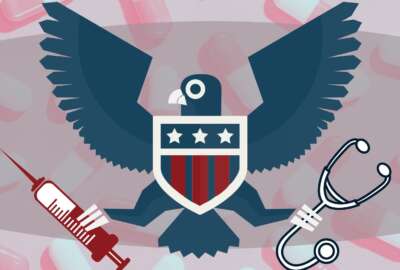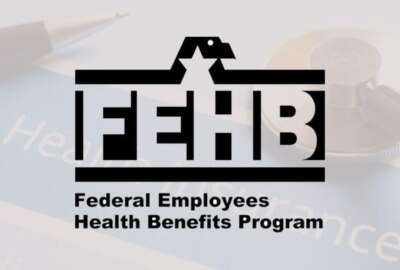What feds should know before Open Season ends this year
Not every FEHB enrollee should necessarily make a change to their health, vision and dental plan options, but at the very least federal health experts say it’s...
Ahead of a new year of health care, federal employees and annuitants have less than a week left to take advantage of Open Season — and possibly make changes to their enrollments.
Enrollees have until 11:59 p.m. on Dec. 11 to make their final selections. If they don’t act, their current plan in the Federal Employees Health Benefits (FEHB) program will automatically roll over into 2024.
Not every enrollee should necessarily make a change to their health, vision and dental plan options. At the very least, it’s wise to learn how your plan will change in 2024, said Kevin Moss, editor of the Consumers’ Checkbook’s Guide to Health Plans for Federal Employees.
“You can’t assume that the plan you had this year will be the exact same plan next year,” Moss told Federal News Network. “You might find new pre-authorization requirements, cost share changes, new benefits or benefits that are no longer available. Also, the in-network status of providers can change any year, as can the coverage status of prescription drugs.”
Information about the coming changes to any plan can be found in section two of a carrier’s official plan brochure as well as on the plan’s website.
The Office of Personnel Management, which runs FEHB and the Federal Employee Dental and Vision Insurance Program (FEDVIP), also offers plenty of tools and information on its website to help enrollees understand their options.
“We really are encouraging our folks to be proactive,” OPM Director Kiran Ahuja said during Federal News Network’s Open Season Exchange. “There’s just lots of information that we want folks to take advantage of so we can increase the participation of going through the review. If your plan is great, that’s good. But we want to see more activity on our website to make sure that folks are taking advantage of those materials.”
“All federal employees should have an FSA”
With another sizeable premium increase of 7.7% on average starting in January, taking advantage of Open Season may be especially important this year.
One option that many federal health experts have recommended to FEHB participants is starting a flexible spending account (FSA). These accounts let enrollees set aside pre-tax dollars to go toward covering eligible health care, prescription, dental, vision and child and adult day care expenses.
FSAs are an option for all federal employees, but only 20% actually use them.
“Most federal employees will be paying more for healthcare next year and should be looking for ways to save,” Moss said. “The FSA is one of those ways. All federal employees should have a flexible spending account.”
It’s important to note that participation in an FSA doesn’t continue automatically. Those who had an FSA for 2023 will need to opt into FSAFEDS again.
And there are certain limitations on these accounts that may require a bit of budgeting. Feds can roll over $640 of unused funds into the next plan year. For 2024, there is a maximum contribution limit of $3,200.
Enrollees can sign up for an FSA on the FSAFEDS website.
The argument for a high deductible health plan
Aside from starting or continuing an FSA, feds can also consider enrolling in a high deductible health plan (HDHP) to hedge against rising premium rates.
“This tax preferred plan type generally has the lowest estimated yearly costs in the Guide to Health Plans,” Moss said. “It also lets you save for current and future health care expenses.”
HDHPs give feds access to a health savings account (HSA), which lets enrollees set aside funds that can be used to cover qualified medical expenses not covered by a health plan.
An HDHP “gives you greater flexibility and discretion over how you use your health care dollars,” OPM said on its website.
This type of plan isn’t right for everyone, though. OPM said in general, HDHPs are beneficial for those with low medical expenses. But each HDHP is somewhat unique. OPM recommends reviewing individual plan brochures before making a final decision.
Be aware of Medicare Part D changes
There are also significant changes coming to FEHB next year that will impact federal annuitants with Medicare.
In 2024, those who are enrolled in any of the 17 FEHB plans that offer Prescription Drug Plans (PDPs) and who are enrolled in Medicare Part A or Medicare Parts A and B will be auto-enrolled into the PDP option. Enrollees will have the choice to un-enroll, if desired.
But in most cases, a PDP will be the best option for annuitants on Medicare, Moss said, since the carriers must provide as good or better coverage than what an annuitant’s current plan offers.
Moss reviewed the specifics of these changes — and some instances where it may not make sense — in a recent interview on Fed Life.
Just a few days left in Open Season
There are a number of changes to coverage for the 2024 plan year, including expanded coverage for infertility treatments, maternal health care, dependent care and more.
“Our team works very hard to find the right balance between providing the comprehensive coverage that our federal employees and their families have learned to expect and appreciate, coupled with the affordability of those plans,” OPM’s Ahuja said. “That is something we constantly strive for in the balance that we see.”
Additionally, the number of plans and options out there may overwhelm some enrollees, but there are a few ways to narrow it down.
For one, enrollees can use OPM’s plan comparison tool to weigh up to four different plan options at once.
Additionally, on the very last page of FEHB plan brochures, participants will find premium tables detailing the per-paycheck costs for self, self-plus-one and family health plans.
These tables also break down the share of costs between the enrollees’ share and the government’s share of the premiums. That can help feds consider the costs and benefits of different options.
Regardless, anyone looking to take part in Open Season has to act soon. The open enrollment period ends Dec. 11.
Copyright © 2025 Federal News Network. All rights reserved. This website is not intended for users located within the European Economic Area.
Drew Friedman is a workforce, pay and benefits reporter for Federal News Network.
Follow @dfriedmanWFED






